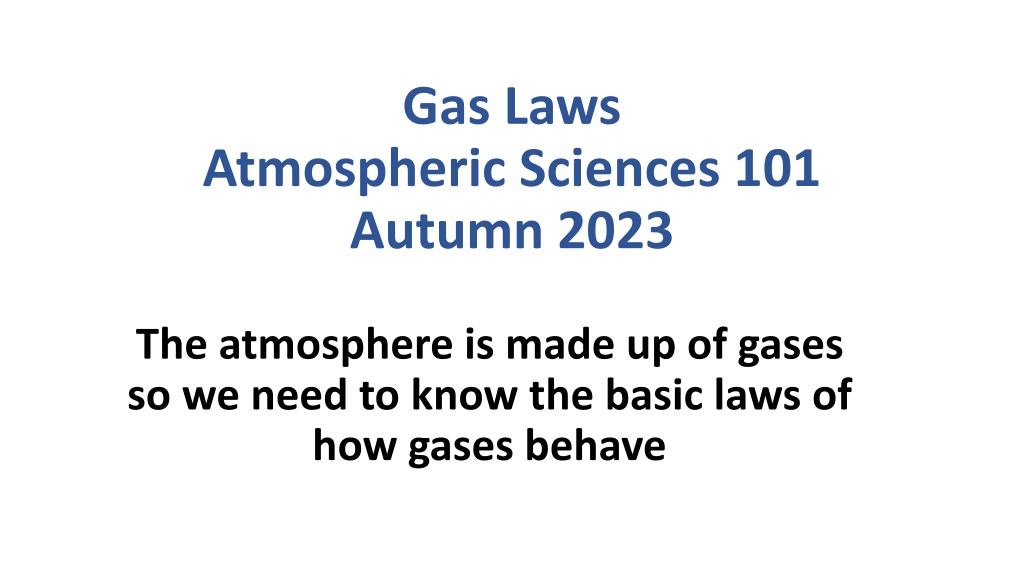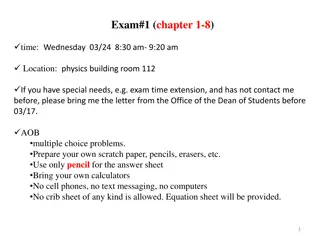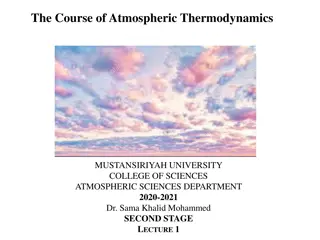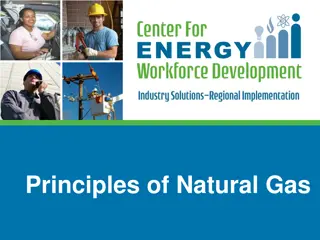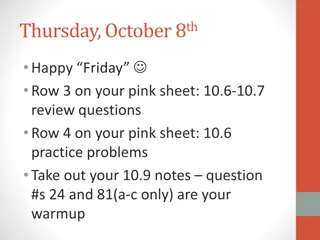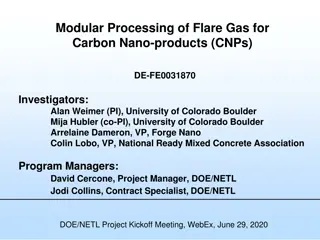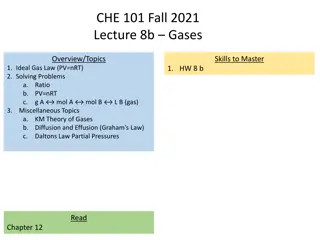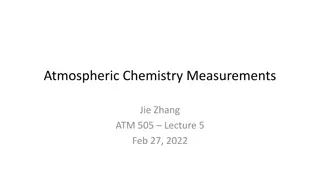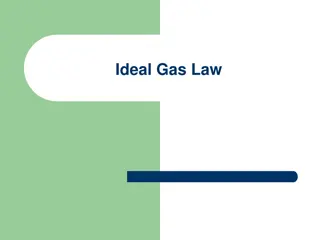Understanding Gas Laws in Atmospheric Sciences
Explore the fundamental gas laws governing the behavior of gases in the atmosphere. Discover key parameters such as temperature, pressure, density, and volume, and how they are interrelated through Boyle's Law and the Law of Charles and Guy Lussac. See practical applications of these laws in our daily lives and understand the basis of air pumps and car engines. Simplify complex concepts to enhance your knowledge of atmospheric sciences.
Download Presentation

Please find below an Image/Link to download the presentation.
The content on the website is provided AS IS for your information and personal use only. It may not be sold, licensed, or shared on other websites without obtaining consent from the author. Download presentation by click this link. If you encounter any issues during the download, it is possible that the publisher has removed the file from their server.
E N D
Presentation Transcript
Gas Laws Atmospheric Sciences 101 Autumn 2023 The atmosphere is made up of gases so we need to know the basic laws of how gases behave
Gas laws describe the relationships between the four key parameters describing the behavior of gases Temperature Pressure Density Volume
Key Gas Parameters Temperature (T): a measure of the average kinetic energy (KE) of atoms and molecules. ( C, F). Expressed in K for calculations. Pressure (P): Force per unit area: F/A. Expressed in Pascals (N/m2)-- Newtons per meter squared. Sometimes in terms of hPa (100 N/m2)
More Key Parameters Density (r r): r r = Mass/Volume. r= M/V Expressed in kg/m3in the metric system. At the earth s surface r ~ 1 kg/m3 , 1 kg = 1000 grams ~2.2 lbs Volume (V): Expressed in m3
Boyles Law (~1660) Start with a sample of air with a temperature (T), pressure (P), and volume (V). If T is kept constant, then: PV=constant
Boyles Law Basis of air pumps we all use
We are all familiar with Boyle s Law in our daily lives.
Law of Charles and Guy Lussac If you increase temperature, while keeping pressure constant, volume will increase. V= constant * T ( K) V = CT Basis of car engines.
Why use two gas laws when you can use one? ?
Can combine both gas laws into one: the Perfect Gas Law (a.k.a., the Ideal Gas Law) P= r rRT Where r r is density (kg m-3), R is a gas constant, P is pressure (Nm-2), and T is temperature (K) One of the key relationships of meteorology
Lets prove it contains the other laws Start with P= r rRT for a particular sample of air (thus mass is constant) Assume T=constant. Then you have: P= r r *constant or P = constant* M/V or PV=constant BOYLE S LAW!
More fun: Law of Charles and Guy Lussac Again start with P= r rRT Assume P=constant. Then you have: Constant=(M/V)*R*T Since Mass and R are constants: Constant= T/V V = constant*T: Law of Charles and Guy Lussac
Gas Law Importance We will use these gas laws to explain many weather features The perfect gas law is one of the key relationships used in computer weather forecast models.
Adiabatic Processes Clouds form as air cools when it rises. But why does rising air cool? And air warms as it forced to sink. Why? Why does the spray from aerosol cans feel cold? And why are bike pumps warm after use?
Explained by adiabatic processes! Air parcel: An identifiable collection of air that stays together. Think of the air in balloon. An adiabatic process is a process that occurs WITHOUT the exchange of energy with the surroundings.
Adiabatic processes In a meteorological context, an adiabatic process is one in which there is no exchange of energy between an air parcel and the surrounding air.
Think of air in an insulated box
How do temperature and pressure vary for an air parcel during an adiabatic process? Imagine an insulated cylinder with air in it, so there is NO heat exchange with the outside environment. Push down the piston. Pressure and temperature increases. P2 > P1 T2 > T1 T1, P1 T2, P2
Adiabatic processes If an air parcel is compressed adiabatically, temperature will rise If allow an air parcel to expand, its temperature will fall. But why?
Adiabatic processes When compressing an air parcel, you are doing work on the molecules in the parcel, giving them a shove and making them go faster. Temperature rises. If an air parcel expands, energy is needed to push out the boundaries of the parcel, resulting in cooling.
To Put It Another Way: The Adiabatic Law In the absence of heat exchange with the outside, an air parcel warms when compressed and cools when it expands. Explains a great deal of what it occurring in the atmosphere
The Adiabatic Law When air is forced to rise, it moves into an environment of lesser pressure (since pressure decreases with height). With less pressure on the air parcel, it expands Expansion results in cooling
Adiabatic Law When air sinks, it moves into an environment with higher pressure, compressing and warming the air parcel.
And an example that many of you have experienced a very cold spray from aerosol cans due to adiabatic expansion and cooling
Influence on saturation and clouds As an air parcel rises, adiabatic cooling can result in increased relative humidity and saturation. The amount of water vapor in an air parcel does not change as it rises As the temperature falls, the air parcel has less ability to hold water vapor. Thus, RH increases. With enough vertical motion, the RH climbs to 100% and the air reaches saturation any more rising leads to water condensing out and cloud formation. Mountains are prime example of this process.
Downslope warming and drying On the other hand, sinking air warms adiabatically and relative humidity decreases. Clouds thus evaporate, producing a cloud or rain shadow.
Great examples here in Washington
Adiabatic cooling/warming can occur outside of mountains as well
These clouds are associated with adiabatic cooling
